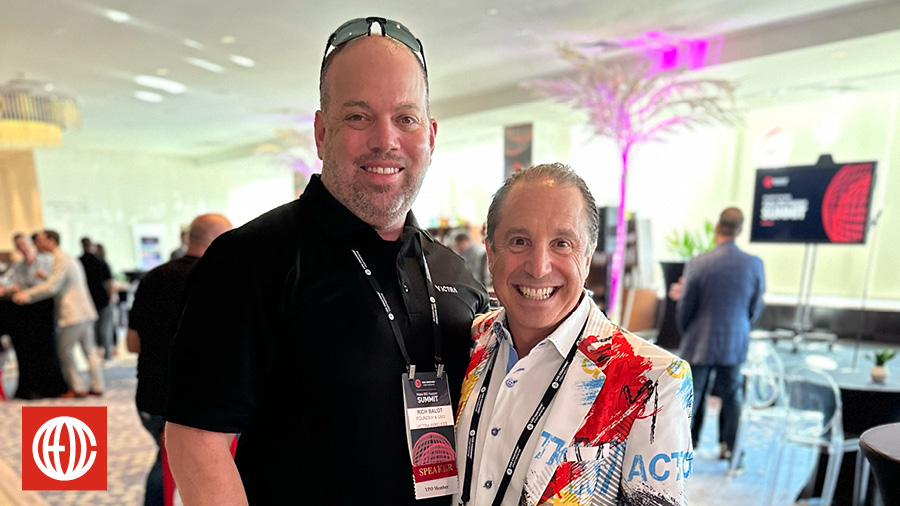2022 Annual Planning Starts Now: Here’s The Most Effective Framework
As we move into another annual planning season, my challenge to CEOs is: What do you want 2022 to be like?
Do you want to spend another year struggling with supply chain issues? How much more time do you want to devote to resyncing your decentralized employees with your essential brick-and-mortar team? Will your board of directors or shareholders accept COVID-19 — again — as the reason you’re still lagging behind long-term sales targets? Can you really endure another 12 months of the same mediocre work from the same longtime employees you just can’t bring yourself to move on from?
Effective annual planning provides the surest, straightest path through these kinds of obstacles. It’s the most significant differentiator between companies that stay small and companies that get BIG.

Your annual planning sessions should be all about alignment. You and your leadership team set-top goals for the next 12 months, and then break those goals down into actionable steps that sync together and generate progress day by day, week by week, and quarter by quarter. In short, your people need to see a clear path forward and they need to feel like you’re all taking that journey together.
Here’s the two-part annual planning framework we use at CEO Coaching International to help our clients make BIG happen.
Part 1: Preparation
The more prepared you and your C-suite are going into the meeting, the more productive and effective the meeting will be. These three steps are essential to crafting a focused planning session that will set a strong tone for the year ahead.
1. Think BIG.
The single most important question a CEO can ask is: “What do I want?”
Everything your company does starts with you, the CEO, looking into your crystal ball and seeing the future that you want. What’s your BIG goal? Where do you want to be at the end of next year? How will that goal feed into a 3-year goal? A 5-year goal?
[Download our Crystal Ball Exercise here.]
If you can’t picture yourself a year from now celebrating with your whole company because you achieved BLANK, then your BLANK for 2022 isn’t BIG enough or specific enough. See a new version of your company that inspires you, and you’ll be able to inspire your team to make that vision real next year.
First-time CEOs or hired guns who are heading into their first annual planning sessions should take some extra time to assess the state of the company. Sometimes a BIG vision has to encompass things like executing a turnaround or making some tough decisions about employees who don’t have the skills to take that next step.
2. Assign prework to your key leaders.
Get your leadership team together and prep them for the upcoming planning session. Share your 10,000-foot view of the year ahead and some context on where you see your company and your industry heading.
At the end of the meeting, distribute the following questions and ask your leaders to spend time thoughtfully responding. Have them send their answers to one member of your team who will then collate them into the annual planning meeting workbook.
- What went right over the past 12 months?
- What went wrong over the past 12 months?
- What did we learn over the past 12 months?
- What are our greatest opportunities next year?
- What are our greatest challenges?
- How did we do on our HOTS or Goals compared to how we said we would do?
- How did we do on the specific and measurable activities that we said would lead to the desired outcome?
- Envision you were starting a new company that would compete with the company you have today. Then answer these three questions. 1) What would you stop doing that you’re doing now? 2) What would you start doing that you aren’t doing now? 3) What would your new company do to try to put your current company out of business?
- What do you see coming around the corner that we should prepare for?
- Which potential competitors should we keep an eye on who might eventually affect our business?
- Rate your direct reports on a scale of 1-10. Whom can you coach up? Whom should we replace?
- What is the number one goal you think we could achieve next year that would have the biggest impact on our company’s growth?
Their answers – and yours – are going to form the blueprint for what you cover at your annual planning meeting.
Make sure you tell your leadership team that COVID-19 is not an acceptable answer to any of these questions, or a reasonable excuse. By the time you’re holding your 2022 planning session, we’ll be nearly two years into the pandemic. If you’ve made it this far, then you’ve pivoted, you’ve protected and rearranged your employees and customers, and you know the best practices that will allow you to keep doing business. A team leader who still thinks COVID-19 is an insurmountable obstacle might not belong in your plans for 2022 and beyond.
3. Hire a facilitator.
When the CEO facilitates an annual planning session, other leaders often consciously or subconsciously feel compelled to agree with the boss. Participants who are further down the chain will be less inclined to voice their honest opinions, which limits the free-flowing exchange of ideas and feedback you need for a successful session. Facilitating also forces the CEO to constantly switch back and forth between being the organizer and being a meaningful participant, to the detriment of both responsibilities.
Whether this year’s session is going to be virtual, in-person, or a hybrid, step away from the podium and dig in with the rest of your team. When the CEO is a full participant in the planning session, it sends a powerful message: “We’re all in this together. I’m responsible for what’s working and what isn’t working, same as you are. We can all do better, including me.” That’s why hiring a third party like one of the coaches at CEO Coaching International to facilitate your annual planning session is always a best practice.
The coaches at CEO Coaching International are experts at running these meetings virtually or in-person. They know how to probe when your team is not fully bought in, dig for root causes of issues being discussed, insist on defining measurable activities and outcomes for key initiatives, call out the elephant in the room that everyone is avoiding, etc. This expertise makes all the difference between a superficial, inconsequential meeting and a true planning session that powerfully aligns and energizes your team around the goals for the coming year and the key activities required to get there.
Part 2: Execute an Effective Planning Session
Now that you, your leadership team, and your professional outside facilitator have completed all the necessary prework, it’s time to talk about how an effective one- or two-day annual planning session actually works.
Remember, this is THE most important business meeting on your calendar for the year. Done well, it will set the stage for explosive growth and BIG accomplishments.
Year after year, we’ve seen the following template help companies at every stage of growth get better. As we’ve completed our own online pivot during COVID-19, we’ve learned how to adapt this template to accommodate meetings held in any virtual or in-person venue.
Our template allows for nuance and flexibility in an annual meeting plan, especially when so many companies are facing critical turning points. Over the course of the meeting, a skilled facilitator will know when to prod, poke, drill down, zoom out, press, or pivot in order to meet the exact needs of that leadership team at that moment.
But first, let’s nail down these 7 basics:
1. Align expectations.
You’ve all done the prework and have come into the meeting with your own ideas and expectations. Now, the facilitator will ask each attendee to share their expectations. Then, she’ll distill those responses into a set of statements that everyone is aligned with. By the end of this brief discussion, it should be clear to everybody “what success looks like” for this meeting.
2. Review prework.
As you review the prework, what pops out? What patterns are apparent? What is becoming clear?
Again, if every answer revolves around COVID-19, your attendees are going to have to dig deeper. The pandemic probably exposed more problems with your business than it caused. Those deeper structural issues that would have dragged you down eventually in any environment are where you need to focus.
Having said that, don’t dismiss any lingering pandemic issues that touch upon employee safety and emotional wellbeing, especially if there are legitimate problems that could be dragging down overall productivity. The annual planning session probably isn’t the correct forum for wellness discussions, but if your employees don’t feel like you care, they’re not going to align to your larger purposes. Listen, empathize, and make a clear plan to tackle EQ issues at a later date.
3. Review last year’s results.
On a scale of 1 to 10, how well did you execute on last year’s plan? How large is the gap between where you are and where you’d aimed to be? What could you do to improve your execution this year? Were any of your answers to the prework informed by your results from the past year? Are there any problems or issues from the past year that will need to be resolved this year?
4. Determine high-level outcomes.
Now it’s time to crystallize the specific and measurable outcomes you want to achieve. As facilitators, we typically start by looking out three years: just far enough to achieve a Huge Outrageous Target (HOT), but not so far that it’s easy to forget about those long-term objectives. From there, we’ll zoom in and look at the next 12 months and determine the specific objectives we want to achieve that will keep us on pace to hit our long-term HOTs.
5. Determine specific initiatives.
A skilled facilitator will walk you through a process that could include divergent thinking, convergent thinking, prioritizing, voting, and challenging so you arrive at a manageable number of initiatives that have a high probability of leading to your HOTs. This year, that list might include some new opportunities that the pandemic has created, such as:
- Acquiring distressed assets
- Expanding community outreach
- Upgrading staff training
- Recruiting displaced or dissatisfied talent
6. Drill down and assign ownership.
Break down your annual initiatives and identify the specific, short-term milestones along the way to measure your progress. We’ll answer such questions as:
- What will it take to guarantee it happens?
- What will stand in the way of making it happen?
- How will we overcome what stands in the way?
- Who owns it?
- When will it be done?
- How will we keep score?
7. Commit to Make BIG Happen.
We’ll end the meeting with a strong, united commitment on the plan and a clear understanding of “who will do what by when.”
And then comes the hard part: following through.
Not even the most thorough annual plan is going to take care of itself. Hitting your targets requires consistent KPI review, a sustained meeting rhythm that reinforces accountability, and a culture that embraces both clear responsibilities and bold innovation.
Annual planning provides the framework that makes these activities possible. Strong leadership from the CEO is what drives those activities forward through the rest of the year and makes BIG happen.
The Make BIG Happen System
Learn more about the proven methodology for CEOs, entrepreneurs, presidents and founders of companies that helps them drive extraordinary growth in their businesses. The rhythms, the questions and the tools are all explained.
About CEO Coaching International
CEO Coaching International works with CEOs and their leadership teams to achieve extraordinary results quarter after quarter, year after year. Known globally for its success in coaching growth-focused entrepreneurs to meaningful exits, CEO Coaching International has coached more than 1,000 CEOs and entrepreneurs in more than 60 countries and 45 industries. The coaches at CEO Coaching International are former CEOs, presidents, or executives who have made BIG happen. The firm’s coaches have led double-digit sales and profit growth in businesses ranging in size from startups to over $10 billion, and many are founders that have led their companies through successful eight, nine, and ten-figure exits. Companies working with CEO Coaching International for two years or more have experienced an average revenue CAGR of 31% (2.6X the U.S. average) and an average EBITDA CAGR of 52.3% (more than 5X the U.S. average).
Learn more about executive coaching | Meet our world-class coaches





